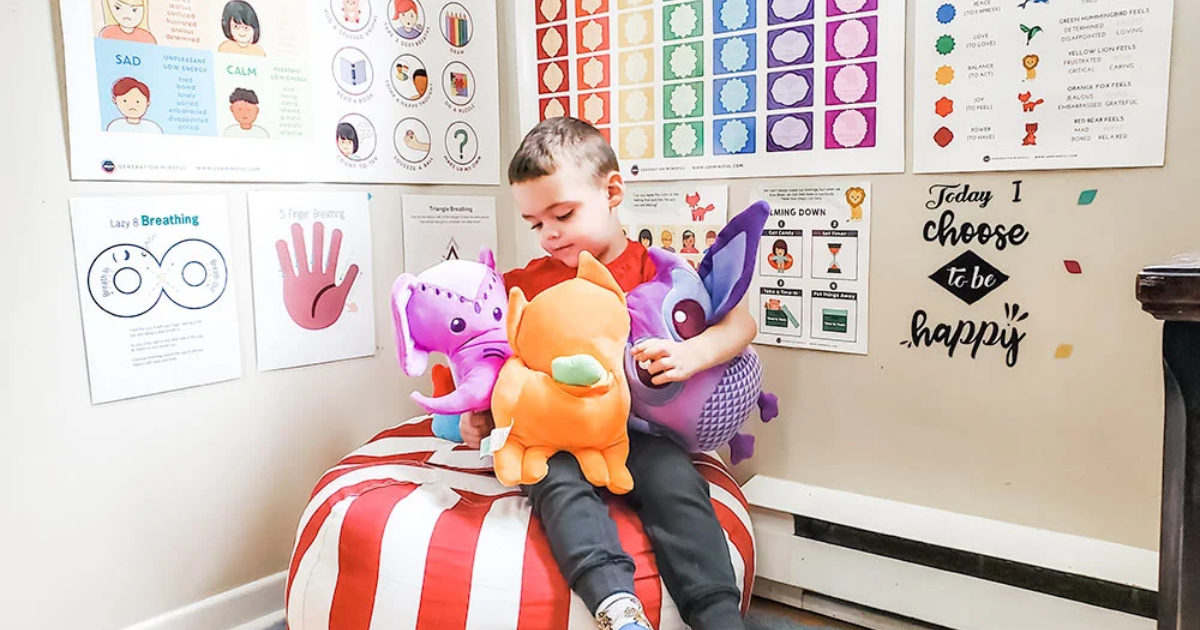How to Create a Classroom Calming Corner That Brings Peace and Growth

You know that moment when a student’s face tightens, shoulders rise, or hands tremble, and everything else stops? I’ve been there. As a school counselor, I’ve seen how a well-designed calming corner can become a lifeline in those moments. It’s not magic, but it’s one of the most powerful tools I’ve used for support and growth.
If you’re wondering how to create a classroom calming corner, this blog is for you. I want to walk you through what a calming corner truly needs, how to set it up in a way that students respect and use it, and why this little corner can make a big difference, not just in behavior, but in trust, emotional safety, and learning.
What a Calming Corner Actually Does
A calming corner is a designated space in your classroom where students can go to pause and reset their emotions. According to research, these spaces help students build self-regulation skills and recognize their feelings before they spiral.
When you set one up well, it becomes a tool students don’t fear. They see it as help, not punishment. I’ve noticed in classrooms I work with that when students learn how to create a classroom calming corner with clear rules and consistent expectations, the corner becomes a normal part of the classroom rhythm, not something they get sent to when they’re “in trouble.”
Steps to Set Up a Calming Corner That Respects Emotion
Here are the essential steps I follow (and coach others to follow) when making a calming corner:
- Choose a quiet, low-traffic spot. The location should feel safe and calm. It shouldn’t signal isolation but comfort.
- Include tools students can choose from. Things like soft pillows, sensory objects, breathing prompts, and emotion charts. Let students explore what helps.
- Teach students how to use it. Model deep breathing, show how to use emotion charts or timers. Role-play calm-down strategies so students feel confident.
- Set clear expectations. Explain when and how the calming corner is used. Define how long a stay might be, who checks in, and what behavior is safe.
- Normalize its use. Use the calming corner yourself if needed. Show students that everyone needs an emotional reset sometimes.
Common Mistakes and How to Avoid Them
I’ve seen calming corners set up with all good intentions, but they fail in practice. Here are pitfalls and how to avoid them:
- Making the corner feel like “time out” or punishment. If students fear it, they avoid it.
- Leaving tools unused or broken. If items are damaged or confusing, students won’t try.
- Rules that are unclear. If students don’t know when or how they can use the space, they lose trust.
- Overcrowding or sensory overload. It needs to be calming, not chaotic.
Why It Matters for Emotional Learning and Classroom Culture
When you learn how to create a classroom calming corner, you’re not just creating a space. You’re making a statement: emotions matter here. Students feel safer. Teachers feel more equipped. Learning is possible when the inner world feels steady enough to focus.
This ties in deeply with Social Emotional Learning, grief support, and emotional regulation. I find that corners like these help when students carry grief, anxiety, or just everyday stress. They learn not just to react but to recognize and choose, one breath, one tool, one moment at a time.
Final Thoughts
If you’re considering adding a calming corner, I want you to remember this: it’s less about how fancy the corner looks and more about how much trust, clarity, and compassion you build around it.
By teaching students how to use it, modelling calmness, and staying consistent, you’ll see ripples of change in behavior, in feelings, in how safe students feel. How to create a classroom calming corner isn’t a checklist. It’s a practice of care. And in my work as Susan Rardon Rose, both as a counselor and coach, I’ve seen how powerful that practice can be, for one student, for many, for the whole class.



